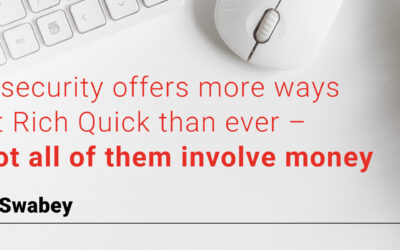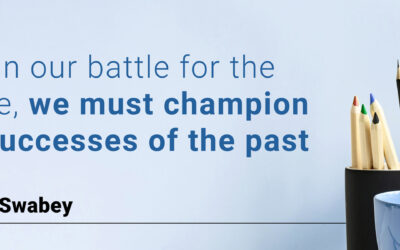Don’t Just Say It. Think It. Be It. Do It. Value It. Truly Embrace It.
Social identity shapes the equity in your workplace – so embrace it to drive real change
I have to be honest: when I first started out with this magazine two years ago, I thought ‘Equality’ and ‘Equity’ were the same, so I created content based predominantly around Equality.
And then the penny dropped. I realised that everyone needs to be on the same playing field – with the same rules, but adapted based on circumstances. And if one person needs more resources to create the same opportunity to create an equal outcome? Then that’s what needs to be done so they can both be successful.
I understand that some individuals may see this as unfair for a variety of reasons – but with the industry, economy, and skills shortage the way they are at the moment, how can it not be fair, or beneficial to all of us, to help those that need it the most?
Many communities presently suffer from inequity, including disabled people; individuals from the LGBTQ+ community; women of colour; and those that are economically disadvantaged.
For us to embrace equity – and to truly make this the 2023 resolution for businesses – we need to allow all to thrive, removing all of the barriers that might hold them back. You might not see it now, but in the long run taking proactive steps will solve the skills shortage problems across industries – making us a stronger community on the whole.
This can only be accomplished by offering targeted support to disadvantaged demographic groups within the organisation, so that we can bridge the opportunity gaps that exist between minority and majority groups within a company.
So, you want to take action and embrace equity?
If we all lead and advocate for better equity, we will create a better shared future for our industry and others.
The issue here is that equity and inclusion need to come from the top down, with equity as more of a focus than diversity and inclusion. To help all employees improve their skills and grow, CSOs and HR departments must ensure that they do the following:
- Implement clear metrics for tracking progress.
- Equip managers with the necessary training and knowledge for evaluating employees during reviews and promotions processes without bias.
- Create an inclusive workplace where all employees have a fair chance to advance their professional skills and rise through the ranks.
- Hold managers accountable.
- Evaluate and create pathways for professionals to transition successfully into mainstream security roles.
- Encourage leaders to express their motivation, as well as acknowledge any barriers, for countering inequity; set clear goals toward greater equity; and then to take action. By doing this, they signal a commitment that becomes the foundation of the organisation’s diversity and inclusion efforts.
- Develop your employees’ coaching skills by implementing a coaching culture around a network of champions who enable the development, contributions, and career growth of all employees.
- Ask the hard questions when you are hiring or internally running talent programs. Ensure everyone has access to on the job training. Don’t make assumptions about individuals’ current capabilities or potential to do other jobs or tasks in the future. And triple check that no specific workgroups have different standards attributed to them.
- Rethink and improve your policies, as well as employees’ networking and work arrangements – eliminating bias and improving inclusivity across work groups or divisions.
Get to know your social identity
Our social identities are shaped by age, ethnicity, religion, gender, sexual orientation, education, physical ability, race and socioeconomic status. They deliver unique perspectives, and far too often they define what privileges of power we perceive as being deserved.
Generally, inequity is fuelled by unconscious assumptions and experiences that are tied to social identity. So, once we teach individuals to identify their own social identities, we can use communication and conversation to shape others’ experiences while removing unconsciously held biases.
Your workplace is representative of the world around you, and needs to be supportive of all employees, regardless of background.
By defining diversity through a lens of social identity, all employees have a way to put themselves into a discussion of diversity, equity, and inclusion.
If you are looking at this list of action items and thinking ‘wow, this is way above my head / paygrade or just too hard’, think again! It’s not easy – but positive change never is.
Just take one item – any item – from this list, and do it well with structure and process. Talk about it, ask for help, discuss in best practice forums – and that will take your company one step further in the right direction.
At its core, workplace equity is all about empowering employees to be their best, and ensuring that everyone within the organization is treated fairly. Everyone expects and receives the same treatment in terms of opportunity, consequences, and rewards.
To borrow from this year’s theme for International Women’s Day: Don’t Just Say It. Think It. Be It. Do It. Value It. Truly Embrace It. We need to be doing this everyday, celebrating and working towards a greater more balanced equity in this world.
And that starts with you. So let’s get to it – and march into 2023 embracing equity for a better, brighter future.



